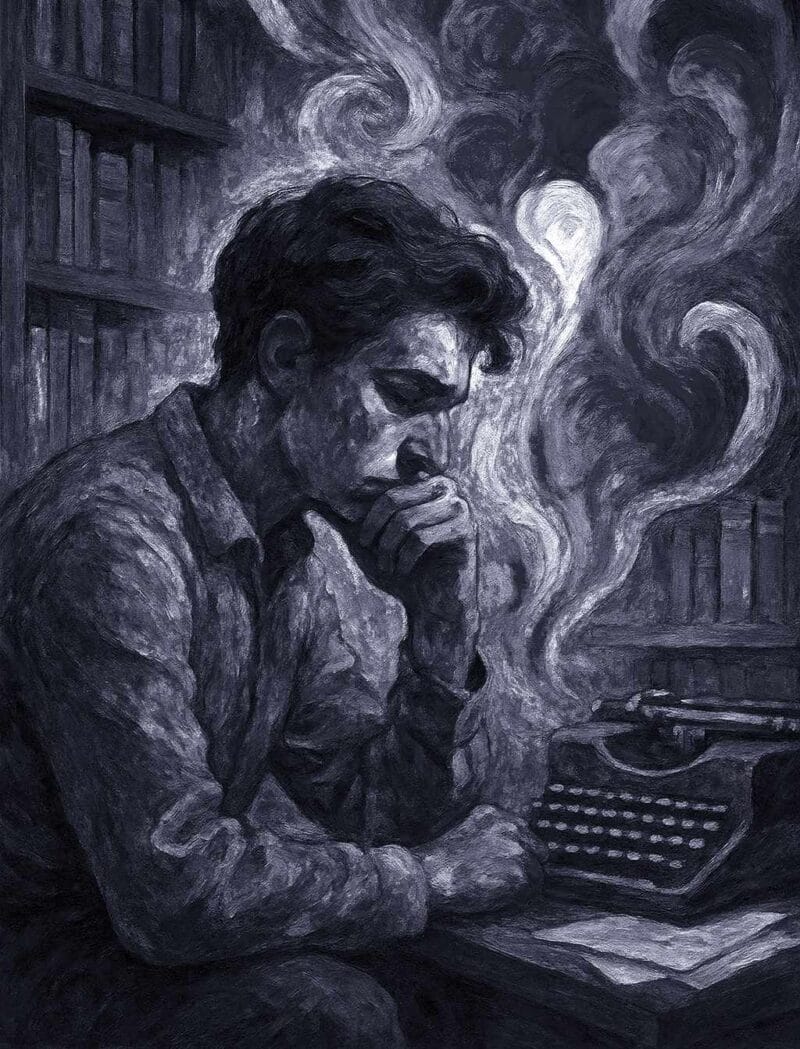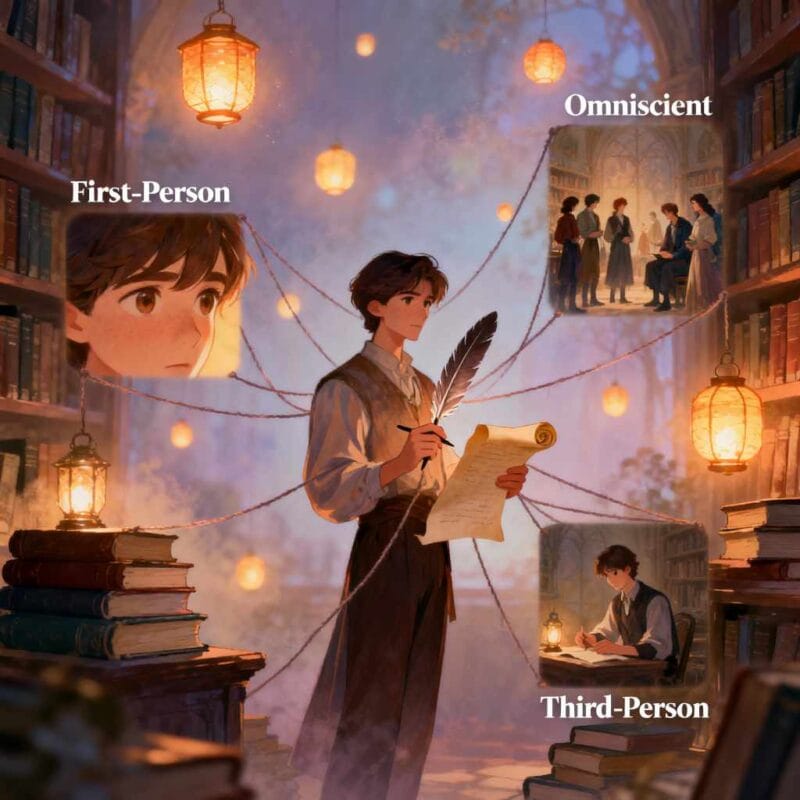Nonlinear narrative, disjointed narrative, or disrupted narrative is a narrative technique where events are portrayed, for example, out of chronological order.
Nonlinear storytelling breaks away from the traditional, chronological narrative structure, offering readers a unique and engaging experience. By presenting events out of sequence, nonlinear narratives challenge our perception of time and storytelling, making us piece together the puzzle of the plot as we read. This technique can delve into characters’ pasts, explore multiple timelines, and provide a richer, more immersive experience.
In literature, nonlinear plots can be found in works such as William Faulkner’s The Sound and the Fury (1929) and Toni Morrison’s Beloved (1987). These stories jump between different timelines, unraveling the narrative in a way that deepens our connection to the characters and their experiences. Such narratives not only offer a fresh reading experience but also mirror the complex nature of human memory and storytelling.
Readers who explore nonlinear narratives often find themselves more engaged as they actively piece together the story. By disrupting traditional storytelling, authors can create more dynamic and compelling tales. Whether through flashbacks, multiple perspectives, or fragmented timelines, nonlinear narratives enrich the reading journey, making the act of reading an active, participatory experience.
Conceptual Foundations

Nonlinear storytelling challenges the conventional order of events, creating an intricate narrative structure that invites readers to engage deeply with the material. This section delves into the essence and origins of this unique literary technique.
Definition of Nonlinear Narrative
A nonlinear narrative presents events out of their chronological sequence, often using flashbacks, flash-forwards, or parallel plots. This technique can enhance the storytelling experience by adding complexity and depth.
Readers encounter the story in pieces, building the narrative puzzle themselves. Such narratives can create suspense, offer multiple perspectives, and reflect the disjointed realities of life.
Notable examples include Gabriel García Márquez’s One Hundred Years of Solitude (1967), which shifts across generations and timelines, illustrating the non-linear approach vividly.
History and Evolution
Nonlinear narratives have roots in ancient literature, with texts like The Odyssey (1614) employing flashbacks extensively. As literature evolved, writers began exploring more fragmented story structures.
In the 20th century, authors like James Joyce and Virginia Woolf popularized stream-of-consciousness techniques, further disrupting linear narrative forms. Woolf’s Mrs Dalloway (1925) and Joyce’s Ulysses (1920) exemplify this movement, presenting events as they unfold in the minds of characters.
The evolution continued into postmodernism, with writers like Kurt Vonnegut and Italo Calvino experimenting with even more complex, layered narratives, cementing the nonlinear narrative as a staple in modern literature.
Structural Characteristics

Nonlinear storytelling in literature diverges from the traditional chronological order, providing unique ways to narrate a story. This section explores the various types and techniques used in nonlinear narratives, as well as their impact on the role of chronology within stories.
Types of Nonlinear Narratives
Nonlinear narratives come in several forms, each with distinctive structural characteristics. Flashbacks and flashforwards are common, allowing readers to see events from different points in time. Parallel narratives, where multiple storylines occur simultaneously, offer another approach. Fractured narratives, which break the timeline into disjointed pieces, require the reader to piece together the story.
Each type of nonlinear narrative serves to enhance thematic elements, character development, or build suspense.
Narrative Techniques
The techniques used in nonlinear storytelling are essential to its structure. In medias res, starting in the middle of the action, immerses readers immediately into the narrative. Fragmentation is another method, splitting events and revealing them out of order. Meanwhile, foreshadowing hints at future events, creating anticipation and a deeper connection to the story’s eventual outcome. Lastly, stream of consciousness allows readers to experience the protagonist’s thoughts in a nonlinear fashion, mimicking the associative nature of human thought. These techniques add complexity and depth to the narrative, inviting repeated readings to fully grasp the story.
Role of Chronology
In nonlinear narratives, chronology is flexible and often subordinate to thematic and emotional resonance. The strategic manipulation of time can highlight contrasts, build tension, or offer insight into a character’s motivations and growth. Furthermore, nonlinear plots challenge readers to engage actively, piecing together the sequence of events from clues and context.
Shuffling the story’s timeline can also reflect real-life memory and experience, which are inherently non-sequential. This structural choice invites readers to explore multiple dimensions of time and remain engaged in the narrative in a way that linear storytelling might not achieve as effectively.
Impact on Narrative Text

Nonlinear storytelling reshapes how narrative texts are experienced, offering unique benefits in terms of reader engagement and thematic depth.
Reader Engagement
By presenting events out of sequence, nonlinear narratives capture the reader’s curiosity. This technique often transforms the reader into an active participant as they piece together the plot like a puzzle.
This engagement style demands higher cognitive involvement, enhancing the overall reading experience. Joyce and Faulkner have masterfully employed nonlinear structures to keep readers on their toes.
By disrupting traditional storytelling methods, nonlinear narratives successfully maintain interest and intrigue, ensuring that readers remain invested throughout the book. Emotionally, this can amplify suspense and surprise, contributing to a memorable literary journey.
Thematic Depth
Nonlinear storytelling adds layers of thematic complexity by interweaving multiple timelines and perspectives. This technique allows authors to explore themes such as memory, identity, and time in nuanced ways.
Themes can unfold gradually, revealing connections that might remain hidden in a linear narrative. This enriches the reader’s understanding and prompts deeper reflection on the story’s themes, characters, and events.
For instance, texts like Catch-22 (1961) by Joseph Heller and Slaughterhouse-Five (1969) by Kurt Vonnegut leverage nonlinear structures to delve into the absurdities and traumas of war.
By offering varied viewpoints or revisiting events from different angles, nonlinear narratives provide a comprehensive exploration of complex themes, making the story richer and more intricate.
Challenges and Considerations

Writing for nonlinearity requires a departure from traditional, linear storytelling. Authors must decide the points at which the narrative will diverge from chronologically ordered events.
One critical aspect is defining the key moments that make up the nonlinear structure. These moments should be significant and compelling enough to hold the reader’s interest. Writers need to ensure that these pieces are strategically placed to reveal enough information without causing confusion.
Using flashbacks and time jumps effectively is another challenge. These elements should be integrated seamlessly into the narrative to enhance the story rather than disrupt it. Clear markers or hints about the time changes can help readers navigate the shifts.
Another consideration is character development across multiple timelines. Each version of a character should remain consistent with their overall arc, despite the nonlinear presentation. This requires meticulous planning and character backstory development.
Maintaining Cohesion
Maintaining cohesion in a nonlinear plot necessitates a clear understanding of the relationship between different events. Writers must ensure that all narrative threads are interconnected in a way that makes overall sense to the reader.
Developing transitional elements is crucial. These could be thematic or emotional links that bind separate events together, creating a sense of unity in the story. Consistent motifs or symbols can serve as anchors, helping to guide the reader through the non-chronological sequence.
Consistency in tone and style across parallel timelines plays a significant role in cohesion. Even as the plot jumps across times and places, the narrative voice should remain recognizable and steady. This helps prevent disorientation and keeps the reader grounded.
Lastly, revisiting pivotal moments from different perspectives or at different times can reinforce cohesion. If a critical event is viewed through multiple lenses, it offers deeper insight and creates connective tissue throughout the narrative.
Considering the challenges, crafting a nonlinear narrative involves careful orchestration of complex elements to maintain coherence and engagement. With successful implementation, it renders a challenging yet potentially deeply satisfying storytelling approach that engages readers.
Further Reading
The Art of Linear and Non-Linear Storytelling by Storied Data
How the Brain Reacts to Scrambled Stories by Max Green, The Atlantic
When (and why) did Western fiction begin to include nonlinear narrative structure? on Reddit
What impact do non-linear narratives have on readers? on Quora




